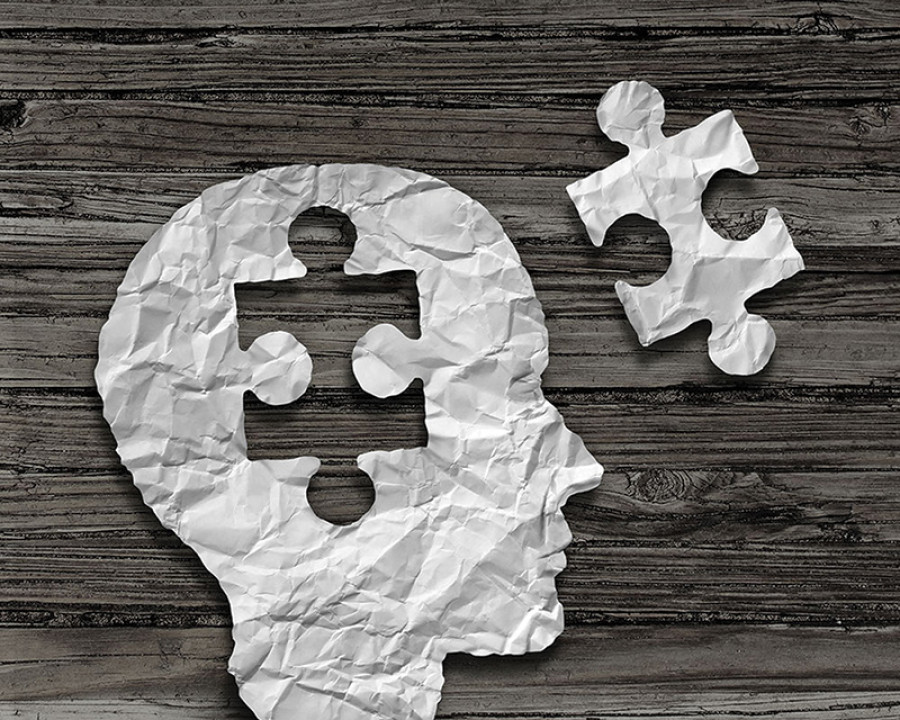Opinion
Where do they belong?
Mentally ill individuals on the streets suffer even though their conditions are manageable with treatment
Prawash Gautam
In every other street in Kathmandu, we see mentally ill individuals wandering around, pacing up and down the sidewalks, or mumbling to themselves. At times, they are seen being aggressive to passers-by. Those mentally ill individuals often occupy specific corners or streets so that they become familiar faces for many of us passing those streets daily. The fact that they are in the streets speaks volumes about the stigma and abandonment they have faced from their families. In the streets, their vulnerability to discrimination and abuse only increase manifold. Females are more vulnerable, and news about sexual abuse and rape of mentally ill females in the streets are not uncommon.
It is important to understand three interconnected aspects at play, which have a collective role in deciding whether these individuals can be repatriated to a dignified life. First, these individuals suffer from treatable/manageable illnesses. Second, lack of awareness and, consequently, deeply embedded stigma towards mental illness among the patient’s family poses obstacles in reuniting him or her with the family after treatment. Third, local bodies need to play a proactive role in treating and rehabilitating these individuals, educating the families and reuniting them.
Treatable illnesses
The common belief is that these individuals have no hope of being treated and living happy and productive lives. On the contrary, research across the globe has shown such mental illnesses to be treatable with the right care, medication and counselling. For instance, the United States Department of Housing and Urban Development found that over 124,000 Americans living in the streets suffer from severe mental illness like schizophrenia, bipolar disorder or severe depression, all of which are manageable with the right medication and counselling.
Those with mental illness living in the streets in Nepal suffer from similar illnesses, and can be treated and rehabilitated to lead dignified and happy lives. KOSHISH, a mental health organisation dedicated to rescue and rehabilitation of mentally ill individuals from streets as well as other locations such as homes and prisons, has been doing just this.
Keshar Devkota is one such individual who has been rescued. As a patient of mental illness, he lived in the streets of Jawalakhel for 17 years. After rescue and treatment by KOSHISH, he has been working as a receptionist at KOSHISH. More recently, Harimaya, a patient of schizophrenia from Udayapur is recovering in KOSHISH’s transit home after spending almost 20 years on the streets of Udayapur.
Educating patients’ families With all the meaningful and transformative work organisations like KOSHISH are doing, there is one big obstacle to rescuing and treating these individuals. Founding chairperson of the organisation, Matrika Devkota says that while lack of enough funds is one challenge, even if they were to have sufficient funds, they would have to think seriously about rescuing and treating individuals that are homeless.
“The biggest challenge lies on whether the families will take back these individuals once they recover,” he says.What this points towards is the need for formulating procedures and strategies to track the families of the mentally ill individuals and provide them intensive counselling to make them understand the various aspects of mental health and mental illness. The best way would be to provide all the necessary counselling and information to the family while the patient is recovering in the transit home so that he or she can be safely handed over to the family’s care for rehabilitation to the larger society. This can be most effective if the family is assured that the transit home or rehabilitation centre will be in constant touch with the family and will provide any necessary support needed.
Proactive local bodies
In addition to this, the government and elected bodies, especially those at the local level, should show a genuine concern to help the mentally ill that are living on the streets. According to the spokesperson of Kathmandu Metropolitan City Gyanendra Karki, the metropolis has started to identify people begging in the streets and has put them into organisations to rehabilitate them. Although this is a commendable step, he confessed that while formulating the plan to rehabilitate those homeless people who are begging on the streets of Kathmandu, they had not given any thought to the mentally ill on the streets.
This lack of awareness about those with mental illnesses should change. It is high time the local bodies start noticing people living agonising lives, and take the lead in doing the needful to help them. Karki suggests a good starting step. He says: “The metropolis and the police administration should collaborate and take the issue to the concerned ministries to find ways that will help the mentally ill people in the streets as quickly as possible and rehabilitate them in society.”
With the help of the police administration and concerned ministries and local bodies, efforts of local bodies like Kathmandu Metropolis should focus on tracing the families of those in the streets and should educate them on mental health so they accept their family members when they are brought back from streets.
Much more than the smart cities that Nepal’s local bodies are striving to achieve, what we need are places where individuals who are abandoned and suffering in the streets are noticed, respected and valued, and are provided essential interventions to give them back their dignity. Because the elected bodies were elected for their pledge to work for the community, the bigger share of responsibility and accountability comes to them in their response to help perhaps the most vulnerable people in the community. It remains to be seen how our local bodies take the lead in making this happen.
Gautam writes on contemporary social and cultural issues




 21.7°C Kathmandu
21.7°C Kathmandu










